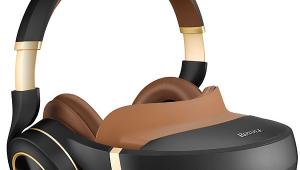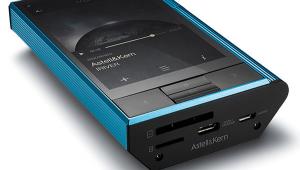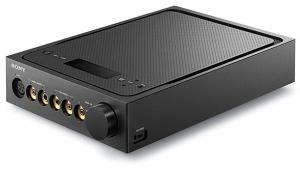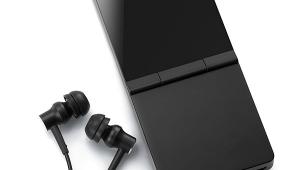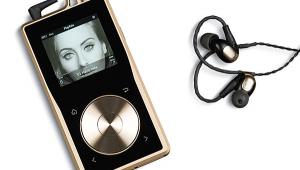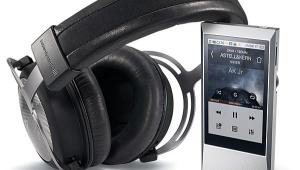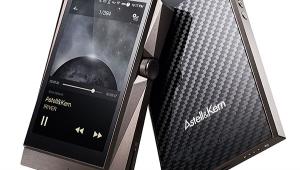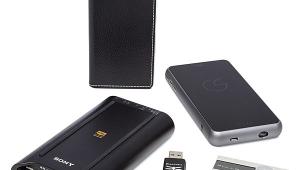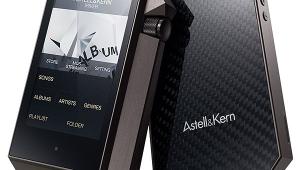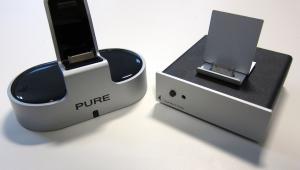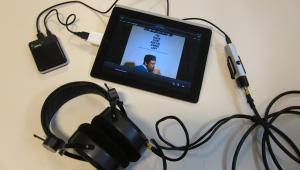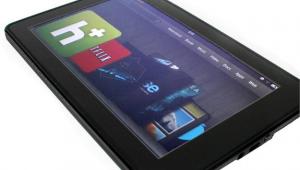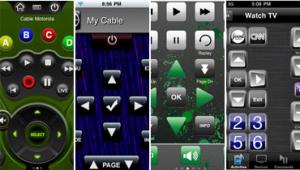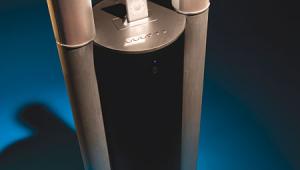Sony Walkman NW-ZX100HN Hi-Res Music Player Bundle
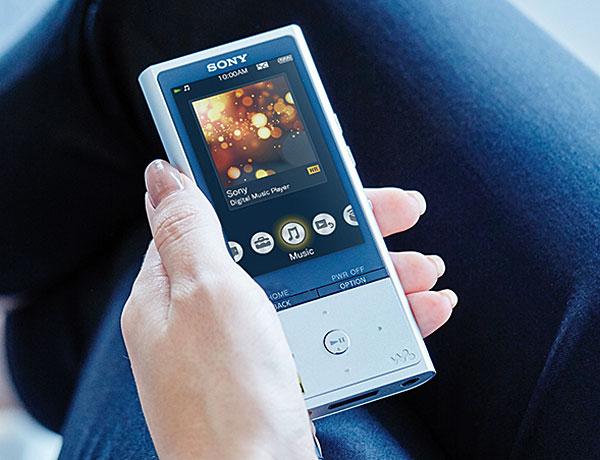
AT A GLANCE
Plus
Built-in noise cancellation for supplied earbuds
Selectable DSD rolloff filter
Up to 70 hours per charge
Minus
No MQA
Challenging headphones will need more power
THE VERDICT
The Sony Walkman NW-ZX100HN delivers beautifully balanced and transparent sound in a not-too-bulky form factor with excellent ergonomics and the unique plus of built-in noise cancellation, but only for its proprietary earbuds.
With the iPod classic gone, smartphones in almost universal use, and streams elbowing out downloads, is the dedicated music player obsolete? Or could it possibly be a retro survivor that mocks its replacement, the way the resurging turntable mocks the CD player? With emerging specialists like Astell & Kern, FiiO, and Questyle being joined in the market by old-school manufacturers like Onkyo and Sony, there seems to be growing interest in building high-quality players that do a better job of delivering highresolution audio than a phone does. On a practical level, they also make it possible to enjoy some tunes without worrying whether your phone—your lifeline—is about to run out of battery power. Enter the Sony Walkman NW-ZX100.
At $600 on its own, the NW-ZX100 is the middle child among Sony Walkman music players we’ve reviewed, sandwiched between the more affordable NWZ-A17 ($300) and the top-of-the-line NW-ZX2 ($1,200). The heft of its light-gray aluminum chassis is closer to that of the top model. You might buy the NW-ZX100 alone. Or you might buy the NWZX100HN bundle, which for an extra hundred bucks includes the MDRNW750N noise-canceling earbuds—with the noise-canceling circuitry built into the player. I reviewed the package, using the supplied earbuds as well as other headphones.
Quality Feel
The player is solid enough to feel like a high-quality product but light enough not to weigh too heavily in a shirt pocket. The front has a 1.6 x 2.6-inch color display, a rectangular navigation rocker with a Play/Pause key in the middle, and wellcamouflaged black sliver buttons for Back/Home and Option/Pwr Off. The left and top sides are blank, leaving the other controls—hold, volume up and down—on the right side, along with the covered microSD card slot. The headphone minijack and USB port are on the bottom. What looks like a third jack is just the attachment point for the carry strap.
Sony says this Walkman has the longest battery life of any model, though it varies according to codec and noise-cancellation status. With MP3 at 128 kilobits per second—should you choose to torture yourself—the unit gets 60 hours with noise cancellation and 70 hours without. FLAC at 96/24 would run for 50 hours with NC and 55 without. DSD at the higher 5.6-megahertz sampling rate would run for 24 hours with NC and 26 without. FLAC 96/24 streamed via Bluetooth (following easy-bump NFC pairing) would run for 28 hours with the better-sounding, Sony-specific LDAC codec, rising to 45 hours with the lower-fi SBC codec. A full charge via computer takes five hours; a charger is not included. All of these times are estimated, of course, and it might be prudent to expect less in actual use.
Onboard memory of 128 gigabytes is expandable via the microSD card slot. The highest-capacity card accepted is 128 GB, bringing potential storage to 256 GB. The unit accepts microSD, microSDHC, and microSDXC cards. Loading music onto the player is easy. It is recognized as a drive by just about any computer; just drag and drop your music files. This is a refreshing change if you’re used to Apple bloatware.

Sony makes a big deal of construction quality, calling attention to the lightweight but rigid aluminum chassis, stainless-steel baseplate with copper and gold plating, low-dielectric board, high-quality vertical contacts between circuit layers, and improved impedance from lead-free solder, among numerous other features. These things are said to improve performance.
One of the more remarkable features is the DSD filter setting. When playing DSD tracks, you have two options. I’ll let the player’s context-sensitive help describe them: The Slow Roll-Off is “good for highly expressive music, such as breathy vocals or strings, to get the uniquely warm DSD sound.” The Sharp Roll-Off is “good for more energetic music, regardless of genre, to hear full sound with sharp attack.” There’s also an optional +6-decibel gain setting to compensate for the lower level of DSD sources relative to PCM. DSD is converted to PCM during playback.
While the Walkman supports the main uncompressed (WAV, AIFF) and lossless (FLAC, ALAC) file formats, along with lower-quality lossy stuff, it doesn’t support the nascent and potentially significant MQA datapacking technology—unlike the Pioneer XDP-100R or the Onkyo DP-X1. MQA currently requires a chipset that the Sony player doesn’t have. There will be no software update for MQA.
Using this player is as easy as it gets. On the home screen, the main menu scrolls across the bottom with the navigation forward and back keys, beneath album art for the currently playing track. A short press on the Back/Home key returns the player to the previous screen; holding the key down takes you to the home screen. The Option/Pwr Off key calls up additional menu items, mostly listening modes; holding it down powers off the player.
Smoothie
Like other Walkmen I’ve tried, the NW-ZX100’s sound was smooth and listenable, although those qualities took different forms with different headphones.

